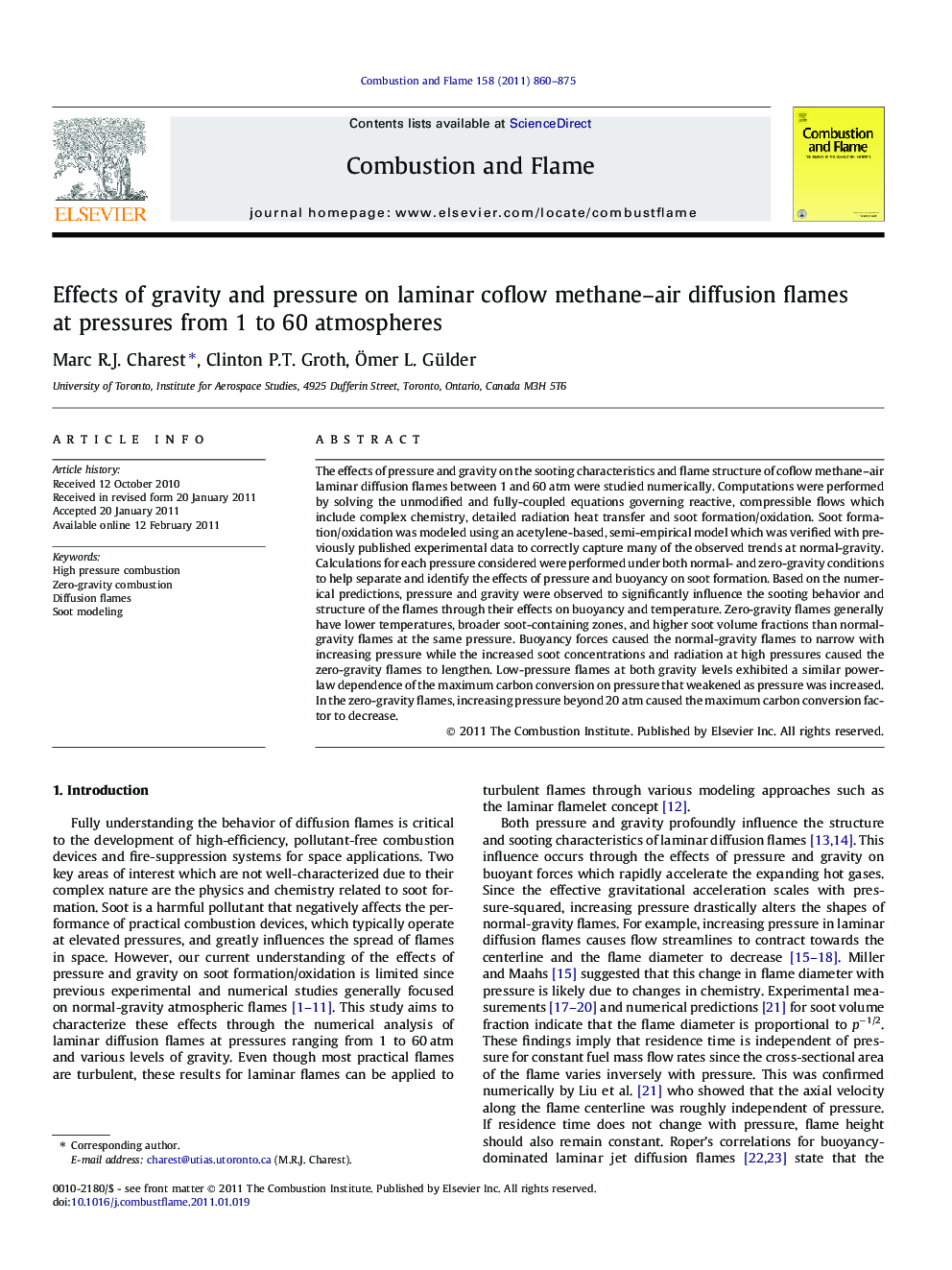| کد مقاله | کد نشریه | سال انتشار | مقاله انگلیسی | نسخه تمام متن |
|---|---|---|---|---|
| 169931 | 458055 | 2011 | 16 صفحه PDF | دانلود رایگان |

The effects of pressure and gravity on the sooting characteristics and flame structure of coflow methane–air laminar diffusion flames between 1 and 60 atm were studied numerically. Computations were performed by solving the unmodified and fully-coupled equations governing reactive, compressible flows which include complex chemistry, detailed radiation heat transfer and soot formation/oxidation. Soot formation/oxidation was modeled using an acetylene-based, semi-empirical model which was verified with previously published experimental data to correctly capture many of the observed trends at normal-gravity. Calculations for each pressure considered were performed under both normal- and zero-gravity conditions to help separate and identify the effects of pressure and buoyancy on soot formation. Based on the numerical predictions, pressure and gravity were observed to significantly influence the sooting behavior and structure of the flames through their effects on buoyancy and temperature. Zero-gravity flames generally have lower temperatures, broader soot-containing zones, and higher soot volume fractions than normal-gravity flames at the same pressure. Buoyancy forces caused the normal-gravity flames to narrow with increasing pressure while the increased soot concentrations and radiation at high pressures caused the zero-gravity flames to lengthen. Low-pressure flames at both gravity levels exhibited a similar power-law dependence of the maximum carbon conversion on pressure that weakened as pressure was increased. In the zero-gravity flames, increasing pressure beyond 20 atm caused the maximum carbon conversion factor to decrease.
Journal: Combustion and Flame - Volume 158, Issue 5, May 2011, Pages 860–875